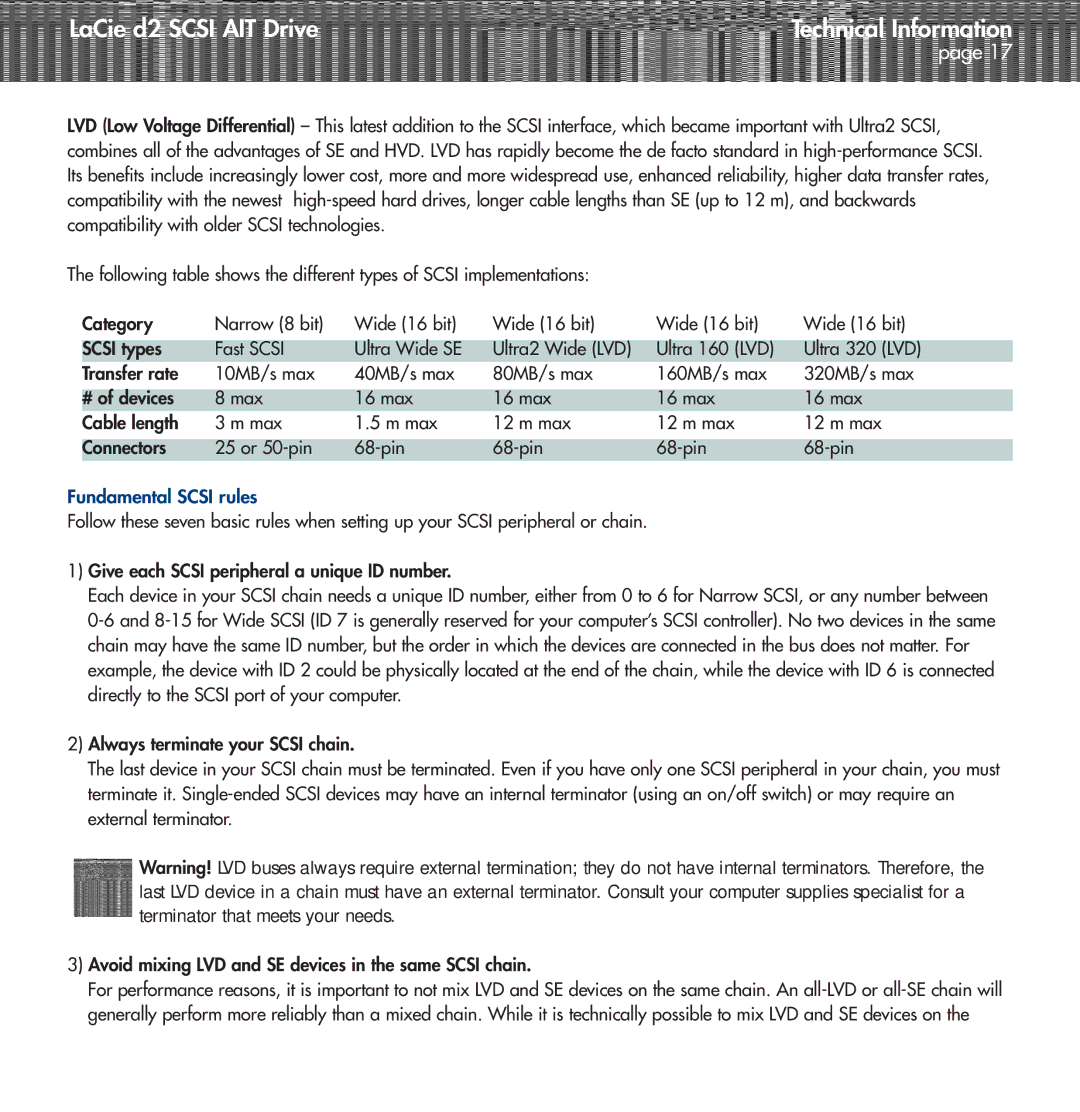
LaCie d2 SCSI AIT Drive | Technical Information |
| page 17 |
LVD (Low Voltage Differential) – This latest addition to the SCSI interface, which became important with Ultra2 SCSI, combines all of the advantages of SE and HVD. LVD has rapidly become the de facto standard in
The following table shows the different types of SCSI implementations:
Category | Narrow (8 bit) | Wide (16 bit) | Wide (16 bit) | Wide (16 bit) | Wide (16 bit) |
|
|
|
|
|
|
SCSI types | Fast SCSI | Ultra Wide SE | Ultra2 Wide (LVD) | Ultra 160 (LVD) | Ultra 320 (LVD) |
Transfer rate | 10MB/s max | 40MB/s max | 80MB/s max | 160MB/s max | 320MB/s max |
|
|
|
|
|
|
# of devices | 8 max | 16 max | 16 max | 16 max | 16 max |
Cable length | 3 m max | 1.5 m max | 12 m max | 12 m max | 12 m max |
|
|
|
|
|
|
Connectors | 25 or |
Fundamental SCSI rules
Follow these seven basic rules when setting up your SCSI peripheral or chain.
1)Give each SCSI peripheral a unique ID number.
Each device in your SCSI chain needs a unique ID number, either from 0 to 6 for Narrow SCSI, or any number between
2)Always terminate your SCSI chain.
The last device in your SCSI chain must be terminated. Even if you have only one SCSI peripheral in your chain, you must terminate it.
Warning! LVD buses always require external termination; they do not have internal terminators. Therefore, the last LVD device in a chain must have an external terminator. Consult your computer supplies specialist for a terminator that meets your needs.
3)Avoid mixing LVD and SE devices in the same SCSI chain.
For performance reasons, it is important to not mix LVD and SE devices on the same chain. An
